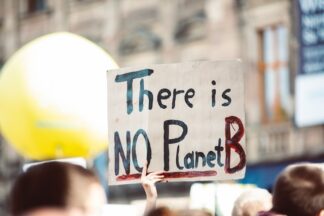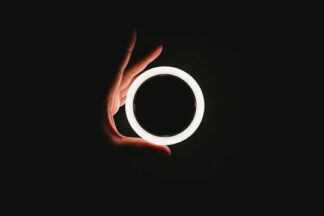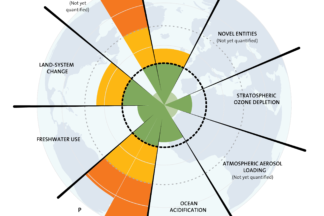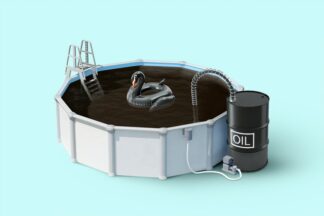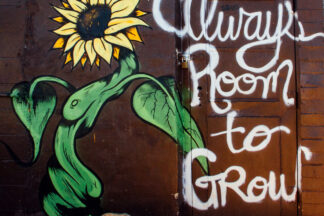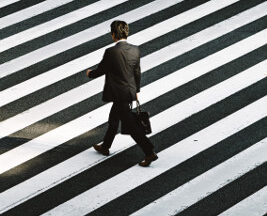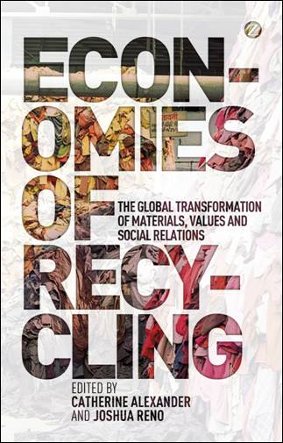Did you ever wonder, how the New Climate Changed reality could look and feel like at its worst?
Then, we may right now be getting a flavour of exactly that.
Ukraine's resource richness may be an important variable in a globalised world that will increasingly be struggling to access necessary resources in the decades to come. Because, after all, and as we learned when we played monopoly: Whomever controls the resources controls the game.
It is quite astonishing: all the different contexts that the term ‘circularity’ or ‘circular economy’ is being used. They key point mostly is of course the waste reduction promises inherent in the term, and the subsequent lower dependency on finite resources.
But, in addition to reducing waste, carbon – or rather carbon footprint – is a key factor.
Unfortunately, the reality is sobering: taking fashion as example, at best between 3% and 6% of the industry's carbon footprint could be remedied that way.
And even worse: in order to realise the potential, three fundamental hurdles must be addressed. Some efforts are underway, of course, but a steep hill remains to climb.
Overconsumption or ‘simply’ consumption?
Fair resource use, or resource depletion?
Fair share, equal share or acquired share of resources?
Those are questions that pop up when the Planetary Boundaries are being discussed.
“Is Europe living within the limits of our planet?: An assessment of Europe's environmental footprints in relation to planetary boundaries”, published in April 2020 does exactly that: it evaluates and calculates the European performance for planetary boundaries by taking a consumption-based (footprint-based) perspective. This is turn is interesting as it relates environmental pressures to final demands for goods and services.
And the results are ... shall we say: a stark call to action.
Many of the most important resources our current civilisation depends on – all of them finite natural resources - form part of what historically would have been called ‘The Commons’. And yet, many of them are economically treated as 'income' and not the valuable and finite 'assets' they are. That again is the tragedy of the commons.
We need new business models that are not predicated on selling more stuff to more people.
And because in the 'Here and Now', there is truly not much more to say, I could finish with the above quote.
Except that: Those ‘new business models’ are not reality. Far from it.
About the Role of the Board in the 'Why'.
The more time I spend ‘doing sustainability’, i.e. being involved both as a professional as well as as an individual in cajoling, motivating, convincing and helping companies – and the individuals therein - to become ‘better citizens’, the more I realised that … actually, in would not be that hard to do better.
Or let me reformulate more accurately: it is equally hard as many other things in businesses.
Italy. Known for the style of its inhabitants, the quality and sharp cut of its suits, the inventiveness of its fashion designers, the quality of its fabrics. Yet, if we were to talk sustainability in textiles and fashion, what is going on on the ground?
The design stage is usually the longest, most expensive and riskiest part of the chain. Additionally, research has shown that at least an estimated 80% of a product's environmental (and to a lesser degree also social) impact is locked at the design stage into a product. By integrating the product design with the supply chain, companies can compress non-value adding time and costs in their supply chains, increase responsiveness and mitigate supply chain risks – while simultaneously managing (improving) their sustainability performance without added costs or efforts.
The Higg Index is an apparel and footwear industry self-assessment standard for assessing environmental and social sustainability throughout the supply chain.
The Higg Index 1.0 was released on June 26, 2012.
At Shirahime, we have worked quite extensively over the last few months on the development of fashion industry scenarios beyond the 2020 time frame, going as far as 2045.
We mentioned for example Shell as one that used this approach to suit their own goals.
Siemens' 'Future Life' video, as presented the The Crystal in London.
A much more interesting approach, and very insightful in terms of methodology, but also how tangible the results are presented, is Siemens’ work on Future Cities
Supply chains, as a discipline of expertise, have come out of the hiding and recognise their role in reducing corporate risk. This is notably and specifically the case in fashion and textiles. At the same time, 'design' - not just in the creation room, but in all facets where it impacts the making, delivery and use of a product or service, is increasingly recognised as relevant.
The story of London Cloth is a rather engaging one. It all boils down to a rather single minded fascination for looms, mechanical ones specifically. 2 years on, the hobby has become a proper weaving shed with both mechanical and power looms, and clients such as Ben Sherman.
Indigo is probably the most famous of all dye stuffs. Hacienda Los Nacimientos is one of only 2 farms world wide that produce certified organic Indigo, and is located in El Salavador. The farm's story reaches far back, and is marked by the years the country suffered from a violent guerilla civil war.
That textile waste – in the shape of garments as well as in other incarnation – has increasingly a commercial value in an area of globalised markets was a topic here in Shirahime on more than one occasion. This book takes on a larger perspective: Each chapter of the this book offers insights into the recycling economy of a distincly different industry.
2045: scenarios for the textile and fashion industry: How will the industry look like in 5, 10 and 30 years time? Scenarios offer research-based insights, and potentially can show how realistic a world is, that looks rather quite different from what we're used to. What if Asia become today's Europe? What if we did not buy to own? What if everyone was a maker?
North Italian fabric manufacturer Bonotto is returning to their roots and at the same time giving luxury fashion fabrics a new lease of authenticity and craftsmanship.
For their ‘Fabbrica Lenta‘ (the slow factory) range, they have unearthed the looms as well as dye techniques their district made its name with in the early 20th century.
C&A, part of the Cofra Holding that owns C&A Europe, Brazil, Mexico and China, has been a family business since 1841.
The company is quite conservative in communicating corporate responsibility achievements. Their style of communication appears to be more emotional than factual.
The company has been awarded the Textile Exchange Future Shaper award in 2012 recognising the company’s commitment to promoting the analysis and certification of organic cotton and textiles.
PASS THE BATON is a new type of recycle shop with two locations, in the center of Tokyo. It cherishes the emotional bound that both, previous and new owner have with the item, fostered by a carefully curated setting.
In the 1990s Nike was caught in a sweatshop scandal showing poor working conditions in the Asian factories of its suppliers.
Today Nike wants to “bring inspiration and innovation to every athlete in the world”. The evolution of the company’s mission is powerful because it adds meaning and purpose to its existence: from “produce”, to “help” to eventually “inspire and innovate”.
Circular economy is the antonym of linear economy. Linear economy has been the dominant industrial model in our history and postulates production is followed by consumption that then ends up with the disposal of used products. As opposed to this, circular economy seeks to rebuild capital, whether this is financial, manufactured, human, social or natural and sees products having a longer or a never-ending life that are either re-used as new inputs to create new products or shared and co-owned by different consumers.

